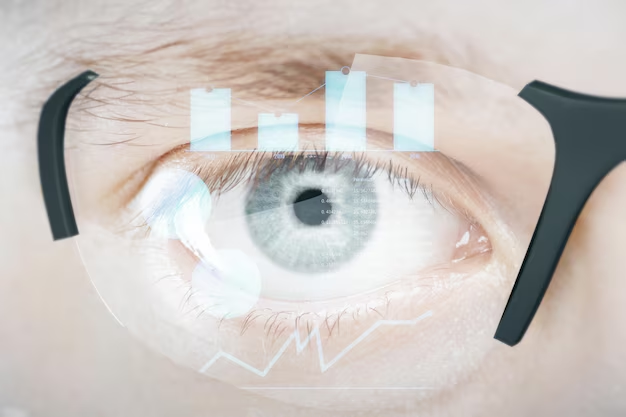Understanding Cataracts: How Quickly Do They Progress?
Imagine this: you wake up one morning and notice that the world seems a little blurrier than usual. Colors are less vibrant, and reading the morning paper requires more effort. For many, this could be an early sign of cataracts—a common eye condition—but knowing how fast cataracts can progress is crucial for managing your eye health effectively.
🌟 What Are Cataracts?
Cataracts are a clouding of the eye's natural lens, often developing naturally with age or as a result of certain conditions. They can lead to symptoms like blurred vision, difficulty with bright lights, and trouble seeing at night.
Types of Cataracts
Understanding the different types of cataracts can help provide context for how they might progress:
- Nuclear cataracts: Usually associated with aging, these cataracts form in the central zone of the lens.
- Cortical cataracts: This type develops in the lens cortex and can cause issues with glare.
- Posterior subcapsular cataracts: Often affecting reading vision, they develop faster than other types and are more common in people using steroids or with diabetes.
🔍 How Fast Do Cataracts Develop?
The rate at which cataracts develop can vary dramatically:
- Age-Related Cataracts: The most common form, age-related cataracts progress at a slower pace over years. However, lifestyle factors can impact this rate.
- Diabetes-Related Cataracts: People with diabetes might experience a faster progression due to fluctuations in blood sugar levels.
- Traumatic Cataracts: Following an eye injury, cataracts might develop rapidly.
- Congenital Cataracts: Present at birth, this type may not progress but requires early intervention to prevent vision issues.
Factors Affecting Cataract Progression
Several elements can influence how quickly cataracts develop:
- Genetics: If close relatives experienced cataracts, you might be predisposed.
- Sun Exposure: Prolonged exposure to UV rays can accelerate cataract formation.
- Smoking and Alcohol: Both habits can increase the risk and speed up the progression of cataracts.
- Nutrition: Poor diet lacking in antioxidants could contribute to a quicker development.
🌿 Natural Progression and Management
While cataracts begin as small, inconspicuous vision changes, they might progress to noticeable vision impairment.
Recognizing Early Symptoms
Cataracts often start subtly. Here’s what to watch out for:
- Blurred or cloudy vision
- Glare or halos around lights
- Fading or yellowing of colors
- Need for brighter light when reading
- Difficulty seeing at night
📝 Summary of Early Symptoms:
- 👁️ Blurred vision
- 🌌 Halos around lights
- ☀️ Sensitivity to bright lights
Monitoring and Managing Cataracts
Ophthalmologists recommend regular eye exams to monitor the progression, especially for those over 60. Protective sunglasses and a healthy diet can help slow the process.
🛡️ Preventative Measures
While cataracts can’t be entirely prevented, several strategies can minimize the risk or delay their development:
- Use Sunglasses: Ensure they block 100% of UV rays.
- Healthy Diet: Incorporate leafy greens, fruits, and foods rich in antioxidants.
- Avoid Smoking: Quit or minimize smoking to reduce risk factors.
- Regular Eye Exams: Early detection allows for better management options.
🔄 Transition: When Is Cataract Surgery Needed?
As cataracts progress, they can significantly impact daily life, from driving to reading. When should one consider surgery?
Cataract Surgery: The Deciding Factors
Cataract surgery is common, safe, and effective. Deciding on surgery depends on:
- Impact on Daily Life: If cataracts interfere with routine activities, it might be time to discuss surgery with an eye specialist.
- Vision Requirements: Professions demanding sharp vision may necessitate earlier surgical intervention.
📝 Decision-Making Criteria:
- 👨⚕️ Impact on quality of life
- 🔍 Professional vision demands
- 🤝 Doctor’s recommendations
🏆 Latest Advances in Cataract Treatment
Advancements in medical technology have improved cataract treatment options significantly:
- Intraocular Lenses (IOLs): Offer clearer vision post-surgery and can correct other vision issues.
- Laser-Assisted Surgery: Enhances precision and outcomes by using lasers to break down the cloudy lens before removal.
👁️ After Surgery: What to Expect
Recovery from cataract surgery typically takes a few weeks. Follow-up appointments ensure proper healing and adaptation to new lenses.
Post-Surgery Care Tips:
- Avoid Heavy Lifting: Prevents strain on the eyes.
- Use Prescribed Drops: Essential to prevent infection and inflammation.
- Regular Check-Ups: Ensures optimal healing and adjustment.
🌠 Recognizing the Signs: Knowing When to Act
Being informed is empowering. Recognizing the signs of cataract progression and knowing the right time to consult a specialist can greatly affect the quality of life.
Key Takeaways:
- Cataracts develop at varying speeds influenced by age, lifestyle, and health.
- Early detection and regular monitoring are crucial.
- Surgical intervention is highly effective once daily activities are affected.
- Advances in technology have made treatments safer and more efficient.
Understanding cataracts is the first step toward managing them. With the right knowledge and care plan, you can maintain clear vision and a high quality of life. Prioritize regular check-ups and consult with your eye care provider to stay ahead in the journey of eye health management.
